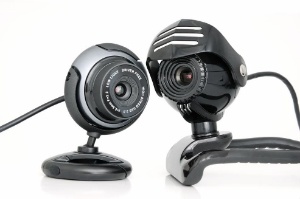 So before we get started on some tips and tricks about how to get the content of your website or blog optimized, let us first get insights into what optimized content is all about. Then, we will jump off to explore what the secrets are to achieve optimized content.
So before we get started on some tips and tricks about how to get the content of your website or blog optimized, let us first get insights into what optimized content is all about. Then, we will jump off to explore what the secrets are to achieve optimized content.
So, content optimization includes the various tactics we apply to make the best and most effective use of our website or blog to increase the rank or traffic from search engines. Optimizing our content includes the various ways we write our article/content to make it more visible to the search engines. These tactics include improving the relevancy of our content and thus our website pages. Now, in the new era of the web and networking, you have to be careful about optimization because no matter how great your content is if it is not going to be found at the top spot in search engines, it is not going to help your marketing outreach efforts. Thus, content optimization is an important step in the content marketing process.
1. TEXT OPTIMIZATION
 Well, the first step towards optimizing your content would be to manage keyword research but there’s a lot more you can do to make the optimization as perfect as you can. For the keyword research step, I would like you to use keywords and phrases that are gravitating on the search engines or the keywords that are more popular. A step that is often neglected by many web content publishers is the optimization of the subtitles, title tags, heading etc. It is, of course, critical for all pages but it has more significance for the landing pages which are suppose to have most of the sought after information about your content.
Well, the first step towards optimizing your content would be to manage keyword research but there’s a lot more you can do to make the optimization as perfect as you can. For the keyword research step, I would like you to use keywords and phrases that are gravitating on the search engines or the keywords that are more popular. A step that is often neglected by many web content publishers is the optimization of the subtitles, title tags, heading etc. It is, of course, critical for all pages but it has more significance for the landing pages which are suppose to have most of the sought after information about your content.
Title Tag:
The part indicated in the html code as the tag “(title)” goes to set off the title tag for your page and is important to be pondered upon because it shows what your page actually wants to convey in just a few words.
The title tag deserves to be on your great focus list because it is used in a number of places (e.g. it is the main link text on the search engines to direct towards your website). It appears on the top of the browser when viewed. It is used by social sites when your page is being shared to describe your page. Thus, it is just not only important to make your content attractive for search engines but also to explain to the visitors about the nature of your work.
Meta Descriptions:
The part of text displayed on the search engine results pages – or SERPs – as a brief description of your content are referred to as meta descriptions, and are thus a key piece of information for your audience.
Meta descriptions should be relevant and describe accurately to the visitors what your content is going to be about. You need to be precise when deciding your meta descriptions as search engines normally have character limits of about 150-160 characters and thus anything that passes these limits gets chopped off. Even without the limit of minimum characters applied by the search engines, meta descriptions are suppose to be brief and precise thus targeting directly at the main issue of your page as this is your opportunity to attract the searchers to click on your page and get a view of it. So try to avoid generic material such as ‘Welcome to our Site’ kind of wording that provides nothing to tell the visitor about the content of your page.
Meta Keywords:
Meta keywords are somewhat similar to meta descriptions. Although people often neglect meta keywords for not having any direct response in improving a page’s ranking, they can severely cause damage to the search engine rankings if the tags are overstuffed. Thus, meta keywords, just as other described elements, are important parts of the web page that need attention.
Some web publishers in a hope to get prompted in additional search results, paste as many possible keywords as they can into meta keyword tags. But that is obviously not the case and the results are to their disappointment.
URLs:
A URL that is rich with keywords is even more attractive to the search engines as they provide a more precise and explanatory insight. So while giving your titles and tags a special focus, you should also optimize your URL so as to ensure its meaningfulness and straightforwardness. It must contain relevant and accurate keywords that reflect the nature of your site content. When needed, you may add long-tail kinds of keywords into your URLs. So, the more specific results can more easily lead your site towards the search engine.
2. IMAGE OPTIMIZATION
Images are also frequently used in content marketing. And in this regard, the visual material that you add in to your website or blog needs to be optimized in order to be seen by search engines. If you’ve successfully applied ideal optimization to the visual content on your page it will not only get onto the image searches specifically but can also make its way to general SERPs if the search engine thinks of the images to be relevant to the visitor's search.
Although the future goal for many of the search engines is to automatically detect the nature of the content depending on your image, this has not been achieved yet (unlike text optimization). And although the image optimization also relies largely on the text content and text optimization of the page, they still have their own worth to distinguish its relevance to the search query. For an instance meta tags used for each image is vital for determining the contextual meaning of your image. The meta data of your visual content include source (i.e., name and location of the file), alt and tags. To get into search engines they all must be optimized.
Alt Tags:
The text that is used to explain what your image is about is called the alt text/alt tag. It is important because:
- It describes the image when it is not being displayed because of slow internet connection or if page loads improperly and incompletely.
- If a visually impaired person is visiting your site through some text reading software then your image’s alt tag is the one that would be read.
So when adding images to your web content, you should chose simple and keyword rich phrases for your alternate tags to describe what your images is about.
Image Tags:
Image title tags are just like the alt tags, image titles are supposed to be the words that appear when you scroll your cursor over an image. They also help the viewers to understand the actual context of your visual content. So be careful when choosing the tag words and select them such that they accurately describe your image.
File Name:
File names aim at describing how your image is related to other content on your pages. Just like the alt and image tags, file name should also contain keywords of your optimized content. So when uploading images make sure to change the conventional numbering names like “img001.jpg” to something meaningfule like “something.jpg”.
File Size:
Well this is something related to the user experience of your site because a site with excessive images or very large images often fail to load properly specially in slow internet connection and these may result in lower ranking in search engines. Therefore it is usually advised to reduce the image size as much as possible without distorting the image or quality of your site.
3. VIDEO OPTIMIZATION
 Content marketing through producing videos is just as common as through text articles or images. There are many examples of viral videos that prove to us that when recording your video you should be careful. When recording your video, it must be enjoyable plus informative and compelling. You should start off with creating an optimized and branded channel for your business on any of the video publishing sites that you like. Having a channel maximizes your chances of your brand being recognized and by having your all videos in a channel you may attract viewers to your other videos. So make sure they are well optimized for which you again need to focus on the video titles and descriptions.
Content marketing through producing videos is just as common as through text articles or images. There are many examples of viral videos that prove to us that when recording your video you should be careful. When recording your video, it must be enjoyable plus informative and compelling. You should start off with creating an optimized and branded channel for your business on any of the video publishing sites that you like. Having a channel maximizes your chances of your brand being recognized and by having your all videos in a channel you may attract viewers to your other videos. So make sure they are well optimized for which you again need to focus on the video titles and descriptions.
Video Title:
Your video title should contain relevant keywords directly depicting the content in your video. But as your goal is to draw people towards you, it should not be dull with a keyword stuffed title. You should make the title an appropriate one yet having keywords in it.
Video Descriptions:
Your description should certainly depict the nature of your video. It should tell viewers what they should expect to watch in your video. You can use it to advertise your website as well by adding a link to some relevant page of your website that has something to with the video. Plus, as always, do make sure to add keywords in your description.
On-Site Optimization:
Just as we put images on our website, some video hosting websites provide you with the embedded code to put the videos into your website's html thus your viewer can simply watch them right on your site rather than on video hosting site. When embedding this code into your website, don’t forget to add the title tags and file names.
4. SUMMARY
 Optimizing your content is an essential part of your website as the main reason for your website is to be viewed even if you are not running a business. So there are basically three levels for a great optimized website.
Optimizing your content is an essential part of your website as the main reason for your website is to be viewed even if you are not running a business. So there are basically three levels for a great optimized website.
- Quality of keywords and tags selected.
- Having appropriate and relevant connection to the content.
- Ability to achieve high ranks in SERPs.
To achieve it, be careful when adding content to your site, whether that content is some text, image or video. Make your descriptions clear to ensure that they attract viewers as well and potential customers. Try to evaluate your keywords from the viewers' perspective. If you follow these suggestions, you’re going to have great optimized site.
So, how do I know if I did everything correctly? Easy! Grade your site!! Here is the link to the "grader" -- https://website.grader.com/ .
Would you like more in-depth information? Take 15 minutes and read "Does Your Website Make The Grade?".



